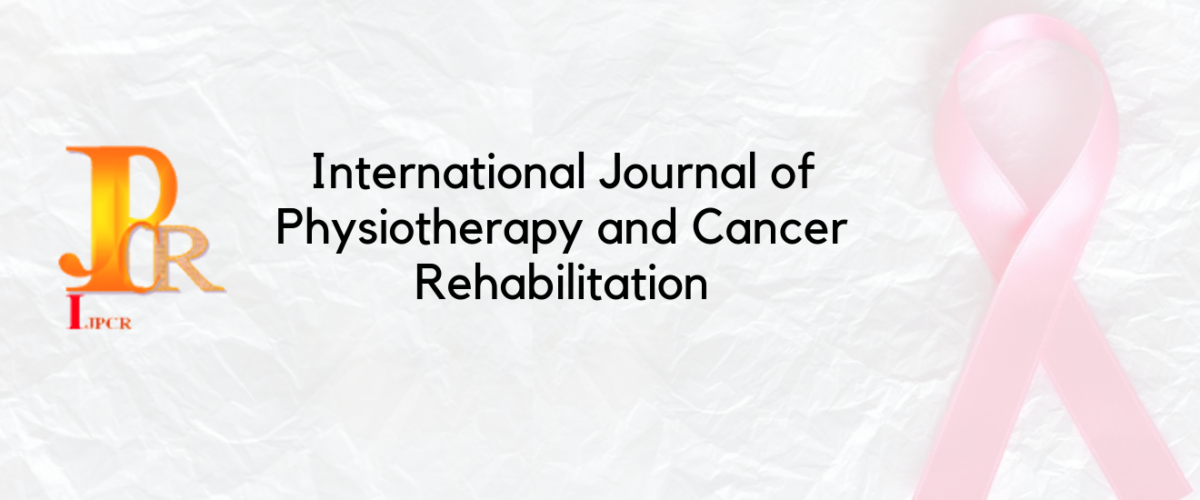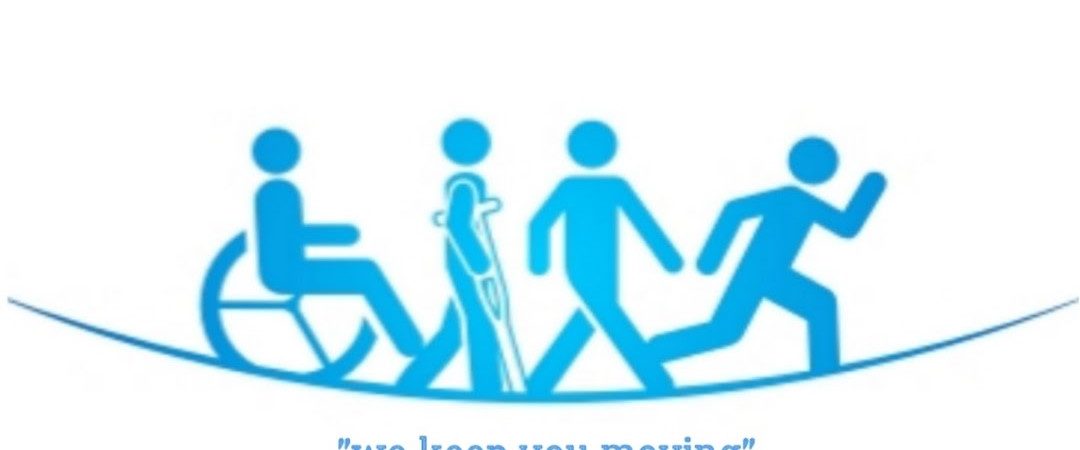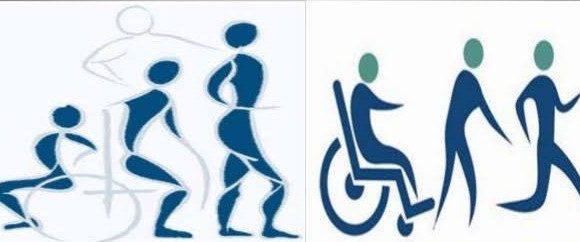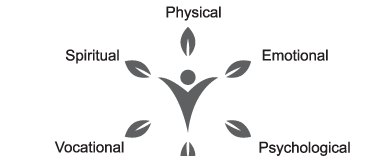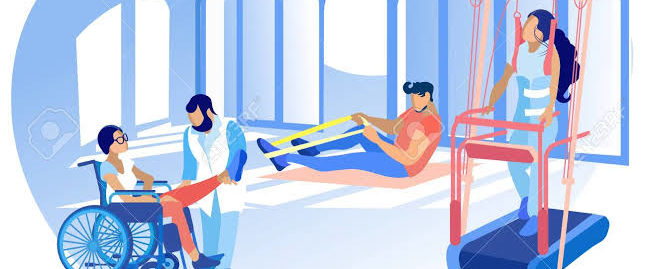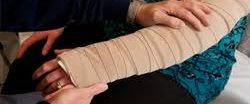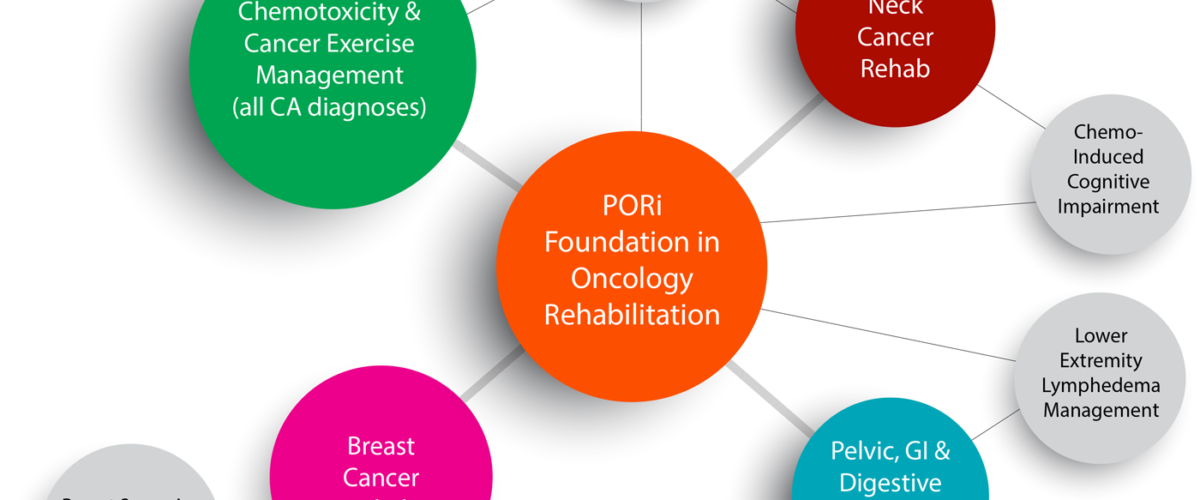IMPACT OF NEURAL MOBILIZATION IN SCIATICA – Dr. Sheenam Popli
IMPACT OF NEURAL MOBILIZATION IN SCIATICA
Dr Sheenam Popli
Lecturer (Faculty of Medical Para-Medical And Allied Health Sciences)
Tantia University, Sri Ganganagar (Rajasthan) 335001 India
Neural mobilization is a treatment modality used in relation to pathologies of the nervous system. It has been suggested that neural mobilization is an effective treatment modality, although support of this suggestion is primarily anecdotal. Richard F. Ellis & Wayne H. Ping (2008) conducted a study to provide a systematic review of the literature pertaining to the therapeutic efficacy of neural mobilization. Their review study revealed that there is only limited evidence available to support the use of neural mobilization. They suggested that future research needs to re-examine the application of neural mobilization with use of more homogeneous study designs and pathologies; in addition, it should standardize the neural mobilization interventions used in their study.
Sciatica is a medical condition of pain going down the leg from the lower back. This pain may go down the back, outside, or front of the leg. Typically, symptoms are only on one side of the body. Certain causes, however, may result in pain on both sides. Lower back pain is sometimes but not always present. Weakness or numbness may occur in various parts of the leg and foot. About 90% of the time sciatica is due to a spinal disc herniation pressing on one of the lumbar or sacral nerve roots. Other problems that may result in sciatica include spondylolisthesis, spinal stenosis, piriformis syndrome, pelvic tumors, and compression by a baby’s head during pregnancy. Treatment initially is typically with pain medications. It is generally recommended that people continue with activities to the best of their abilities. Often all that is required is time and in about 90% of people the problem goes away in less than six weeks.
OBJECTIVE
- To overview the concept of neural mobilization and sciatica.
- To study the effectiveness of neural mobilization in persons with sciatica.
REVIEW OF LITERATURE
Kuslich, S. D., Ulstrom, C. L., & Michael, C. J. (1991) in an effort to define the origin of low back pain and sciatica, 193 patients were carefully studied using progressive local anesthesia. These patients had surgery for herniated discs, spinal stenoses, or both. Various tissues were stimulated during the performance of these lumbar spinal operations. This article discusses our observations and the results of that study. Bush, K., Cowan, N., Katz, D. E., & Gishen, P. (1992) assessed the natural history of sciatica due to lumbosacral nerve root compromise and to evaluate the pathomorphologic changes that accompany the natural resolution of the disease. One hundred sixty-five consecutive patients, 114 males and 51 females, with an average age of 41 years (range, 17-72) and an average duration of symptoms of 4.2 months (range, 1-72) presenting with sciatica thought to be due to lumbosacral nerve root compromise were admitted to the study. The cornerstone of treatment was the serial epidural administration of steroid and local anesthetic by the caudal route on an outpatient basis. Lumbar epidural injection or periradicular infiltration at the appropriate level, confirmed under image intensifier, was the next step before considering surgical decompression. An average of three injections (range, 0-8) was received by each patient. Patients underwent clinical examination and computed tomography. Twenty-three patients (14%) underwent surgical decompression. The remainder were clinically assessed at 1 year after presentation, and 111 were rescanned at the appropriate levels. All conservatively managed patients made a satisfactory clinical recovery: average reduction of pain on the visual analog scale was 94% (range, 45-100), and 64 (76%) of the 84 disc herniations and 7 (26%) of the 27 disc bulges showed partial or complete resolution (chi-square = 20.27 P = 0.0001). Thus a high proportion of patients with discogenic sciatica make a satisfactory recovery with aggressive conservative management, and this recovery is accompanied by resolution of disc herniations in a significant number. Only a small proportion of patients needed surgical decompression. Bill Vicenzino, David Collins & Tony Wright (1994) investigated the effect of two spinal manipulative therapy techniques on skin conductance and skin temperature in the distal C6 dermatome of asymptomatic subjects. The effects of the two spinal manipulative therapy techniques were compared. A randomised, repeated measures, double blind, placebo controlled study design was used to investigate the physiological effect of a C5/6 left lateral glide technique (grade III) with the right upper limb in either the upper limb tension test 1 (LG1) or the upper limb tension test 2b (LG2b) position. Thirty-four normal asymptomatic subjects participated in the study. LG2b and LG1 produced significantly greater increases in skin conductance than did placebo or control. LG2b produced a greater increase than did LG1 but this was not significant. There were no such significant changes in skin temperature. These results provide objective evidence of a physiological effect that is produced by the spinal manipulative therapy techniques under consideration. Koes, B. W., Scholten, R. J., Mens, J. M., & Bouter, L. M. (1995) assessed the efficacy of epidural steroid injections for low-back pain. Data was obtained using computer-aided search of published randomized clinical trials and assessment of the methods of the studies. Twelve randomized clinical trials evaluating epidural steroid injections were identified. Data was extracted based on scores for quality of the methods, using 4 categories (study population, interventions, effect measurement, and data presentation and analysis) and the conclusion of the author(s) with regard to the efficacy of epidural steroid injections. Method scores of the trials ranged from 17 to 72 points (maximum 100 points). Eight trials showed method scores of 50 points or more. Of the 4 best studies (> 60 points), 2 reported positive outcomes and 2 reported negative results. Overall, 6 studies indicated that the epidural steroid injection was more effective than the reference treatment and 6 reported it to be no better or worse than the reference treatment. There appeared to be no relationship between the methodological quality of the trials and the reported outcomes. In conclusion, there are flaws in the design of most studies. The best studies showed incosistent results of epidural steroid injections. The efficacy of epidural steroid injections has not yet been established. The benefits of epidural steroid injections, if any, seem to be of short duration only. Future research efforts are warranted, but more attention should be paid to the methods of the trials. J. McGuiness, B. Vicenzino & A. Wright (1997) reported that Spinal manipulative therapy techniques are frequently applied by physiotherapists to relieve pain of musculo-skeletal origin and to improve the quality of joint movement in a variety of musculo-skeletal conditions. However, there has been little research into the physiological effects of these techniques, or the mechanisms responsible for these effects. The aim of this study was to establish whether a grade III postero-anterior mobilization technique applied centrally to the cervical spine would affect respiratory and cardiovascular indicators of sympathetic nervous system function in pain-free, normal volunteers. A significant increase in respiratory rate, heart rate, systolic and diastolic blood pressure occurred during application of the technique to C5/6, when compared to the control and placebo conditions. There was little change in any of the measured variables during the placebo condition. This study provides objective evidence that application of this mobilization technique elicits changes in sympathetic nervous system activity distinct from placebo in pain-free individuals. These results provide a basis for further research into the physiological effects of manipulative procedures, and in particular, exploration of the mechanisms responsible for analgesia produced by this method. Scrimshaw S.V. & Maher C.G. (2001) determined whether the addition of neural mobilization to standard postoperative care improved the outcome of lumbar spinal surgery. Summary of Background Data. It has been suggested that neural mobilization should be performed after spinal surgery to prevent nerve root adhesions and improve outcome. However, to date, there is no convincing evidence of the value of neural mobilization. Methods- Eighty-one patients undergoing lumbar discectomy, fusion, or laminectomy at a private hospital in Sydney were randomly allocated to standard postoperative care or standard care plus neural mobilization. Neural mobilization included passive movements and active exercises designed to mobilize the lumbosacral nerve roots and sciatic tract. Primary outcome measures were global perceived effect measured on a 7-point scale, pain measured using visual analogue scales and the McGill Pain Questionnaire, and disability measured with the Quebec Disability Scale. Results- All patients received the treatment as allocated with 12-month follow-up data available for 76 patients (94% of those randomized). There were no statistically significant or clinically significant benefits provided by the neural mobilization treatment for any outcome. Conclusions- The neural mobilization protocol evaluated in this study did not provide an additional benefit to standard postoperative care for patients undergoing spinal surgery. The authors advocate that this protocol not be used in clinical practice. Joshua Cleland, Gary C. Hunt & Jessica Palmer (2004) postulated that neural tissue mechano-sensitivity contributes to symptoms associated with peripheral neurogenic pain disorders. However, there is a paucity of literature regarding the most effective clinical practices for managing pain of peripheral neurogenic origin. As clinical use of neural mobilization continues to flourish in the management of these pain syndromes, it is imperative to document outcomes associated with these techniques. The purpose of this single-case A1-B1-A2-B2 design was to investigate the effectiveness of neural mobilization in the management of a 29-year-old female patient with symptoms suggestive of peripheral neurogenic involvement. The intervention phases (B1 and B2) consisted of neural mobilizations specifically directed at the sciatic continuum. Outcome measures (degrees of hip flexion during the straight-leg-raise and pain) demonstrated both visual improvement and statistically significant improvements following implementation of the neural mobilization techniques. This single-case design provides a measure of scientific support for the use of neural mobilizations with patients presenting with lower extremity neurogenic pain disorders. However, generalizability is poor, and further methodologically sound clinical trials are necessary to investigate the effectiveness of neural mobilization in a larger patient population. Dimitrios Kostopoulos (2004) mentioned that Carpal tunnel syndrome (CTS) results from the entrapment of the median nerve at the wrist. It is the most common entrapment syndrome causing frequent disability especially to working populations. Aside from the surgical release approach there are other non-invasive therapeutic methods for the treatment of CTS. This paper will review the evidence regarding neuro-dynamic testing and neuro-mobilization of the median nerve as a treatment approach to CTS. Richard Ellis, Wayne Hing, Andrew Dilley & Peter McNair (2008) stated that Diagnostic ultrasound provides a technique whereby real-time, in vivo analysis of peripheral nerve movement is possible. This study measured sciatic nerve movement during a “slider” neural mobilisation technique (ankle dorsiflexion/plantar flexion and cervical extension/flexion). Transverse and longitudinal movement was assessed from still ultrasound images and video sequences by using frame-by-frame cross-correlation software. Sciatic nerve movement was recorded in the transverse and longitudinal planes. For transverse movement, at the posterior mid-thigh (PMT) the mean value of lateral sciatic nerve movement was 3.54 mm (standard error of measurement [SEM] ± 1.18 mm) compared with anterior-posterior/vertical (AP) movement of 1.61 mm (SEM ± 0.78 mm). At the popliteal crease (PC) scanning location, lateral movement was 6.62 mm (SEM ± 1.10 mm) compared with AP movement of 3.26 mm (SEM ± 0.99 mm). Mean longitudinal sciatic nerve movement at the PMT was 3.47 mm (SEM ± 0.79 mm; n = 27) compared with the PC of 5.22 mm (SEM ± 0.05 mm; n = 3). The reliability of ultrasound measurement of transverse sciatic nerve movement was fair to excellent (Intraclass correlation coefficient [ICC] = 0.39–0.76) compared with excellent (ICC = 0.75) for analysis of longitudinal movement. Diagnostic ultrasound presents a reliable, non-invasive, real-time, in vivo method for analysis of sciatic nerve movement. Michelle L. Heebner & Toni S. Roddey (2008) determined whether neural mobilization in addition to standard care is more effective than standard care alone in the treatment of Carpal Tunnel Syndrome (CTS). Sixty participants were randomly assigned to one of two groups. Group 1 received standard care, and Group 2 performed a neuro-dynamic mobilization exercise in addition to standard care. Outcomes were assessed at baseline and at one and six months using the Disabilities of the Arm, Shoulder, and Hand Questionnaire, the Brigham and Woman’s Hospital Carpal Tunnel Specific Questionnaire (CTSQ), and elbow extension range of motion during an upper limb median nerve tension test. There were no significant differences in the outcome measures between groups, except Group 1 had improved scores on the function status scale of the CTSQ compared to Group 2 at six months. The addition of neural mobilization to standard care did not result in improved outcomes in patients with CTS. Jason M, Beneciuk, Mark D. Bishop & Steven Z. George (2009) investigated potential mechanisms of neural mobilization (NM), using tensioning techniques in comparison to sham NM on a group of asymptomatic volunteers between the ages of 18 and 50. Background: NM utilizing tensioning techniques is used by physical therapists in the treatment of patients with cervical and/or upper extremity symptoms. The underlying mechanisms of potential benefits associated with NM tensioning techniques are unknown. Methods And Measures: Participants (n = 62) received either a NM or sham NM intervention 2 to 3 times a week for a total of 9 sessions, followed by a 1-week period of no intervention to assess carryover effects. A-delta (first pain response) and C-fiber (temporal summation) mediated pain perceptions were tested via thermal quantitative sensory testing procedures. Elbow extension range of motion (ROM) and sensory descriptor ratings were obtained during a neuro-dynamic test for the median nerve. Data were analyzed with repeated-measures analysis of variance (ANOVA). Results: No group differences were seen for A-delta mediated pain perception at either immediate or carryover times. Group differences were identified for immediate C-fiber mediated pain perception (P = .032), in which hypoalgesia occurred for the NM group but not the sham NM group. This hypoalgesic effect was not maintained at carryover (P = .104). Group differences were also identified for the 3-week and carryover periods for elbow extension ROM (P = .004), and for the participant sensory descriptor ratings (P = .018), in which increased ROM and decreased sensory descriptor ratings were identified in participants in the NM group but not the sham NM group. Conclusion: This study provides preliminary evidence that mechanistic effects of tensioning NM differ from sham NM for asymptomatic participants. Specifically, NM resulted in immediate, but not sustained, C-fiber mediated hypoalgesia. Also, NM was associated with increased elbow ROM and a reduction in sensory descriptor ratings at 3-week and carryover assessment times. These differences provide potentially important information on the mechanistic effects of NM, as well as the description of a sham NM for use in future clinical trials. Gladson R.F. Bertolini, Taciane S. Silva, Danilo L. Trindade, Adriano P. Ciena & Alberito R. Carvalho (2009) verified the effectiveness of neural mobilization and static stretching in reducing pain in rats submitted to experimental sciatica.
METHODS: The rats (n=23) were divided into three groups: sham (SG/n=8), without intervention; stretching (STCG/n=8), treated with static stretching; and neural mobilization (NMG/n=7), treated with neural mobilization. The animals underwent an experimental model of sciatica by compression of the right ischiatic nerve with catgut suture thread. There were five consecutive sessions of treatment that began on the third day after lesion. The pain caused by the sciatica was evaluated by a functional incapacitation test that measured paw elevation time (PET), and values over 10s were indicative of pain. PET was measured at the following moments: before the lesion (M1), immediately before (M2) and after the first session (M3), immediately after the last session (M4) and 24h after the last session (M5). ANOVA was applied with repeated measures and unrepeated measures for intra- and inter-group comparison, respectively. RESULTS: In the SG, post-lesion PETs were greater than M1 (p<0.001), suggesting persistence of pain. In the STCG, post-lesion PETs were greater than M1 (p<0.001), but lower when comparing M3 vs. M4 (p<0.05) and M3 vs. M5 (p<0.01) suggesting the effectiveness of the treatment. In NMG, M2, M3 (p<0.001) and M4 (p<0.05) were greater in relation to M1, but not M5, showing that this treatment re-established the normal PET values. CONCLUSION: Both forms of therapy were effective in reducing pain, with neural mobilization being the more effective of the two. Sahar M. Adel (2011) conducted a study to investigate the effect of lumbar mobilization techniques and neural mobilization technique on sciatic pain, functional disabilities, centralization of symptoms in patients, latency of Hoffmann reflex, and of degree of nerve root compromise in chronic low back dysfunction (LBD). Pre-test post-test group design has been used. Sixty patients with chronic (LBD) from both sexes were involved, aged between 30 – 60 years. They were divided into two equal groups, Group (A) received lumbar spine mobilization and exercise intervention and Group (B) received Straight leg raising stretching (SLR) in addition to lumbar mobilization and exercise. Self-report measures included a body diagram to assess the distribution of symptoms, numeric pain rating scale (NPRS), modified Oswestry Disability Index (ODI), Patients recorded the location of their symptoms on the body diagram to determine the extent to which centralization occurred after treatment, The results of study revealed that: there was a significant difference between both groups on pain (p = 0.006), functional disabilities improvement (0.001), location of symptoms (p = 0.083) and sciatic nerve root compression (p = 0.035). However there is no significant Differences in H-reflex latency (p = 0.873) between group A and group B (post-test). It is concluded that straight leg raising (SLR) stretching may be beneficial in the management of patients with LBD. SLR stretching in addition to lumbar spine mobilization and exercise was beneficial in improving pain, reducing short-term disability and promoting centralization of symptoms in this group of patients. Castilho, J., Ferreira, L. A. B., Pereira, W. M., Neto, H. P., da Silva Morelli, J. G., Brandalize, D., … & Oliveira, C. S. (2012) mentioned that Hypertonia is prevalent in anti-gravity muscles, such as the biceps brachii. Neural mobilization is one of the techniques currently used to reduce spasticity. Objective: The aim of the present study was to assess electro-myographic (EMG) activity in spastic biceps brachii muscles before and after neural mobilization of the upper limb contralateral to the hemiplegia. Materials and Methods: Repeated pre-test and post-test EMG measurements were performed on six stroke victims with grade 1 or 2 spasticity (Modified Ashworth Scale). The Upper Limb Neuro-dynamic Test (ULNT1) was the mobilization technique employed. Results: After neural mobilization contralateral to the lesion, electro-myographic activity in the biceps brachii decreased by 17% and 11% for 90° flexion and complete extension of the elbow, respectively. However, the results were not statistically significant (p gt; 0.05). Conclusions: When performed using contralateral techniques, neural mobilization alters the electrical signal of spastic muscles.
Santos, F. M., Silva, J. T., Giardini, A. C., Rocha, P. A., Achermann, A. P., Alves, A. S., … & Chacur, M. (2012) Background: The neural mobilization technique is a noninvasive method that has proved clinically effective in reducing pain sensitivity and consequently in improving quality of life after neuropathic pain. The present study examined the effects of neural mobilization (NM) on pain sensitivity induced by chronic constriction injury (CCI) in rats. The CCI was performed on adult male rats, submitted thereafter to 10 sessions of NM, each other day, starting 14 days after the CCI injury. Over the treatment period, animals were evaluated for nociception using behavioral tests, such as tests for allodynia and thermal and mechanical hyperalgesia. At the end of the sessions, the dorsal root ganglion (DRG) and spinal cord were analyzed using immune histochemistry and Western blot assays for neural growth factor (NGF) and glial fibrillary acidic protein (GFAP). Results: The NM treatment induced an early reduction (from the second session) of the hyperalgesia and allodynia in CCI-injured rats, which persisted until the end of the treatment. On the other hand, only after the 4th session we observed a blockade of thermal sensitivity. Regarding cellular changes, we observed a decrease of GFAP and NGF expression after NM in the ipsilateral DRG (68% and 111%, respectively) and the decrease of only GFAP expression after NM in the lumbar spinal cord (L3-L6) (108%). Conclusions: These data provide evidence that NM treatment reverses pain symptoms in CCI-injured rats and suggest the involvement of glial cells and NGF in such an effect. Richard F. Ellis & Wayne A. Hing (2013) mentioned that Neural mobilization is a treatment modality used in relation to pathologies of the nervous system. It has been suggested that neural mobilization is an effective treatment modality, although support of this suggestion is primarily anecdotal. The purpose of this paper was to provide a systematic review of the literature pertaining to the therapeutic efficacy of neural mobilization. A search to identify randomized controlled trials investigating neural mobilization was conducted using the keywords neural mobilisation/mobilization, nerve mobilisation/mobilization, neural manipulative physical therapy, physical therapy, neural/nerve glide, nerve glide exercises, nerve/neural treatment, nerve/neural stretching, neuro-dynamics, and nerve/neural physiotherapy. The titles and abstracts of the papers identified were reviewed to select papers specifically detailing neural mobilization as a treatment modality. The PEDro scale, a systematic tool used to critique RCTs and grade methodological quality, was used to assess these trials. Methodological assessment allowed an analysis of research investigating therapeutic efficacy of neural mobilization. Ten randomized clinical trials (discussed in 11 retrieved articles) were identified that discussed the therapeutic effect of neural mobilization. This review highlights the lack in quantity and quality of the available research. Qualitative analysis of these studies revealed that there is only limited evidence to support the use of neural mobilization. Future research needs store-examine the application of neural mobilization with use of more homogeneous study designs and pathologies; in addition, it should standardize the neural mobilization interventions used in the study.
METHODOLOGY
The present study is a mixed method type of research. It is an approach to inquiry that combines or associates both qualitative and quantitative forms. It involves philosophical assumptions, the use of qualitative and quantitative approaches and the mixing of both approaches in a study. The present study is aimed to find out the effectiveness of neural mobilization in persons suffering from sciatica. The study was conducted at the department of physiotherapy and rehabilitation Tantia General Hospital Ganganagar (Rajasthan). Thirty patients attending the physical therapy outpatient department of Tantia General Hospital Ganganagar (Rajasthan) were include in the study after they met the following criteria. In order to screen the subjects according to the inclusion/ exclusion criteria, subjects had to complete a screening examination and investigation. Once the subjects registered themselves in the Out Patient Department with the complaint of radiating low back pain, they were assessed according to format given by Andersson & Deyo (1996). Differential diagnosis with other back conditions mimicking sciatica was established. If the subjects were found to have sciatica, all inclusion and exclusion criteria were checked.
Method of Data Collection: Range of motion was measured using goniometer. A Visual Analog Scale was used for assessing the pain. Patients were conveniently allocated either to group A or to group B
Group A (n=15) Experimental Group
•Sciatic Nerve Mobilization
•Traction
•TENS
•MHP
Group B (n=15) Control Group
•Traction
•TENS
•MHP
Neural mobilization was given for approximately 10 minutes per session including 30 sec hold and 1 min rest. The straight leg raise was done for inducing longitudinal tension as the sciatic nerve runs posterior to hip and knee joints. The leg was lifted upward, as a solid lever, while maintaining extension at the knee. To induce dural motion through the sciatic nerve, the leg was raised past 35 degrees in order to take up slack in the nerve. Since the sciatic nerve is completely stretched at 70 degrees, pain beyond that point is usually of hip, sacroiliac, or lumbar spine origin (David, 1997). The unilateral straight leg raise causes traction on the sciatic nerve, lumbosacral nerve roots, and dura mater. Adverse neural tension produces symptoms from the low back area extending into the sciatic nerve distribution of the affected lower limb.
To introduce additional traction (i.e., sensitization) into the proximal aspect of the sciatic nerve, hip adduction was added to the straight leg raise. The average total treatment time was approximately 30-40 minutes per session and the whole treatment was given for 9 sessions. Pain free ROM at hip and VAS was recorded at the end of every 3rd, 6th and 9th sessions. The patients were instructed not to do any type of exercise at home or take any medications.
DATA ANALYSIS
Data was analyzed using the SPSS version 14 for Microsoft Windows.
Independent t-test was performed to compare the ROM and pain on VAS scale between groups A & B at 0, 3rd, 6th and 9th sessions. Paired t test was also performed to compare improvement on 0-3rd, 3rd -6th, 6th -9th and 0-9th sessions within the two groups. The significance (Probability-P) was selected as 0.05.
Fifteen subjects were taken in each group A and B with the mean age of 56.1 and 58.3 years respectively (Table 1).
Table 1: Subject information
Serial No. Group N Age YRS
(Mean ± S.D.)
1 A 15 56.1 ± 4.95
2 B 15 58.3 ± 4.37
___________________________________________________________________________
At zero session the mean of ROM of group A was 39.67 and that of group B was 42.33. When comparison of mean ROM was done between Group A and Group B at zero session the t value was found to be 0.794 which was insignificant. Thus there was no disparity in ROM at the starting of the treatment session between the two groups (Table 2).
Table 2: Comparison of mean values of ROM between group A and group B
S.No. Group N ROM
(Mean ± S.D.)
S 0 S 3 S 6 S 9
___________________________________________________________________________
1 A 15 39.67 53.00 71.00 86.33
±7.90 ±6.49 ±7.37 ±6.67
2 B 15 42.33 50.00 59.33 67.33
±10.33 ±11.80 ±11.16 ±10.67
3 T Value 0.79 0.863 3.38 5.85
S stands for session number
At the end of 3rd session mean of ROM of group A was 53.00 and that of group B was 50.00, the difference in the means was insignificant. At the end of 6th session mean of ROM of group A was 71.00 and that of group B was 59.33, the t value was 3.38 and was significant. At the end of 9th session mean of ROM of group A was 86.33 and that of group B was 67.33 the t value was 5.85 and was significant (Table 2).
Similarly the reduction in pain was noted through VAS score and was evaluated using independent t test. At zero session the mean of VAS of group A was 7.4 and that of group B was 7.13 and the t value was found to be 0 .587 which was insignificant (table 3).
Table No 3: Comparison of mean of VAS score between group A and group B
S.No. Group N ROM
(Mean ± S.D.)
S 0 S 3 S 6 S 9
___________________________________________________________________________
1 A 15 7.40 5.27 3.47 1.67
±1.24 ±1.22 ±0.99 ±0.98
2 B 15 7.13 6.20 5.53 4.60
± 1.25 ±1.42 ±1.13 ±1.12
3 T Value 0.59 1.926 5.34 7.64
S stands for session number
At the end of 3rd session the mean ± SD of VAS of group A was 5.27±1.22 and that of group B was 6.20±1.42 and the t value was found to be 1.926 which was insignificant. At the end of 6th session the mean ± SD of VAS of group A was 3.47±0.99 and that of group B was 5.53±1.13 and the t value was found to be 5.34 which was significant. Similarly at the end of 6th session the mean ± SD of VAS of group A was 1.67±0.98 and that of group B was 4.60±1.12 and the t value was found to be 7.64 which were significant. Thus ROM and VAS showed significant results only by the end of 6th and 9th sessions, whereas the results at the end of 3rd session were insignificant (table 3).
Paired T test was done to compare the improvement between 0-3rd, 3rd-6th, 6th-9th and 0-9th sessions. The mean difference of ROM of group A between 0 to 3rd session was 13.33±4.87 whereas that of group B was 7.67±4.17 and their t values were 4.82 and 4.32 respectively.
Thus group A showed more significant improvement than group B from 0 to 3rd session. Similarly between 3rd and 6th session the mean difference of group A was 18.00±2.50 whereas that of group B was 9.33±4.58 and the t values were 5.28 and 4.47 respectively. Between 6th to 9th sessions the mean difference of group A was 15.33±4.42 and that of group B was 8.00±4.14. The t values were 5.01 and 4.39 respectively. Between 0 and 9th session the mean difference of group A was 46.67±4.49 and of group B was 25.00 ± 8.45. The t values were 5.33 and 4.89 respectively (table 4).
Table No 4: Comparison of Mean Difference of ROM within Group A and B
S. No. Section Group Mean ± S.D. T Value
1 0-3 A 13.33 ± 4.87 4.82
B 7.67 ± 4.17 4.32
2 3-6 A 18.00 ± 2.50 5.28
B 9.33 ± 4.58 4.47
3 6-9 A 15.33 ± 4.42 5.01
B 8.00 ± 4.14 4.39
4 0-9 A 46.67 ± 4.49 5.33
B 25.00 ± 8.45 4.89
___________________________________________________________________________
Table No 5: Comparison of Mean Difference of VAS within Group A and B
S. No. Section Group Mean ± S.D. T Value
1 0-3 A 2.13 ± 0.35 5.25
B 0.93 ± 0.70 3.75
2 3-6 A 1.80 ± 0.56 4.96
B 0.67 ± 0.82 0.76
3 6-9 A 1.80 ± 0.41 5.14
B 0.67 ± 1.23 1.98
4 0-9 A 5.73 ± 0.88 5.27
B 2.27 ± 1.58 3.9
___________________________________________________________________________
Comparison of improvement in VAS score was calculated similarly using the paired t test. The mean difference of VAS for group A between 0 to 3rd session was 2.13±0.35 and that of group B was 0.93±0.70, their t values were 5.25 and 3.75 respectively. Thus group A demonstrated more significant improvement than group B. Similarly between 3rd and 6th sessions the mean difference of group A was 1.80±0.56 whereas that of group B was 0.67±0.82 and the t values were 4.96 and 0.76 respectively. Between 6th and 9th sessions the mean difference of group A was 1.80±0.41 whereas that of group B was 0.67±1.23 and the t values were 5.14 and 1.98 respectively. Between 0 and 9th session the mean difference of group A was 5.73±0.88 and of group B was 2.27±1.58. The t values were 5.27 and 3.9 respectively (table 5).
RESULT & DISCUSSION
The result of this study shows that neural mobilization technique is effective in increasing range of motion at hip and decreasing pain thus reducing the symptoms of sciatica. The mean value of group A where neural mobilization was given shows more significant increase as compared to group B. When the comparison of means of ROM and VAS was done between group A and B by the end of 3rd session there was no significant increase in the ROM (t=0.863) or decrease in the VAS (t=1.926) scores. Thus it is concluded that the effectiveness of neural mobilization was observed only by the end of 6th session for ROM (t=3.379), as well as pain (t= 5.339). By the end of 9th session again there was a significant increase in ROM (t= 5.84) and decrease in VAS score (t= 7.634). Thus neural mobilization technique given to group A proved more effective than the conventional treatment for sciatica administered to group B. Effectiveness of neural mobilization is thought to be due to neural “flossing” effect, that is, its ability to restore normal mobility and length relationship, and consequently, blood flow and axonal transport dynamics in compromised neural tissue. Neural mobilization is very effective in breaking up the adhesions and bringing about mobility. The results of this study also depict the same. The conventional treatment effectively reduces pain and increases ROM at the joint but is unable to eliminate the root cause of the problem. According to Carey et al (1995), it helps in providing symptomatic relief only.
Limitations
- Lesser number of subjects
- No group had similar patients with same degree of involvement
- Age variation from 40-50 years
- Patient’s built was variable
- Proper strengthening program was not followed after neural mobilization sessions due to lack of time
Clinical Implication
This study provides some evidence for use of Neural Mobilization as an adjunct to conventional exercise therapy regime in Sciatica. This study suggests that Neural Mobilization is effective in the treatment of Sciatica.
This study provides preliminary evidence that neural mobilization is effective in the treatment of Sciatica.
CONCLUSION
It is concluded from the study that neural mobilization helps in reducing pain and other symptoms of sciatica. Neural mobilization technique is effective in increasing range of motion at hip and decreasing pain thus reducing the symptoms of sciatica. Neural mobilization technique given to group A proved more effective than the conventional treatment for sciatica administered to group B. Neural mobilization is very effective in breaking up the adhesions and bringing about mobility. The conventional treatment effectively reduces pain and increases ROM at the joint but is unable to eliminate the root cause of the problem
REFERENCES
Arkava, M.L. & Lane, T.A. (1983). Beginning social work research. Boston/London: Allyn and Bacon.
Adel, S. M. (2011). Efficacy of neural mobilization in treatment of low back dysfunctions. Journal of American Science, 7(4), 566-573.
Bush, K., Cowan, N., Katz, D. E., & Gishen, P. (1992). The natural history of sciatica associated with disc pathology: a prospective study with clinical and independent radiologic follow-up. Spine, 17(10), 1205-1212.
Beneciuk, J. M., Bishop, M. D., & George, S. Z. (2009). Effects of upper extremity neural mobilization on thermal pain sensitivity: a sham-controlled study in asymptomatic participants. journal of orthopaedic & sports physical therapy, 39(6), 428-438.
Bertolini, G. R., Silva, T. S., Trindade, D. L., Ciena, A. P., & Carvalho, A. R. (2009). Neural mobilization and static stretching in an experimental sciatica model: an experimental study. Brazilian Journal of Physical Therapy, 13(6), 493-498.
Carette, S., Leclaire, R., Marcoux, S., Morin, F., Blaise, G. A., St.-Pierre, A., … & Montminy, P. (1997). Epidural corticosteroid injections for sciatica due to herniated nucleus pulposus. New England Journal of Medicine, 336(23), 1634-1640.
Carragee, E. J., Han, M. Y., Suen, P. W., & Kim, D. (2003). Clinical outcomes after lumbar discectomy for sciatica: the effects of fragment type and anular competence. J Bone Joint Surg Am, 85(1), 102-108.
Collis, J. & Hussey, R. (2003) Business Research: a practical guide for undergraduate and postgraduate students, second edition. Basingstoke: Palgrave Macmillan.
Cleland, J., Hunt, G. C., & Palmer, J. (2004). Effectiveness of neural mobilization in the treatment of a patient with lower extremity neurogenic pain: a single-case design. Journal of Manual & Manipulative Therapy, 12(3), 143-152.
Castilho, J., Ferreira, L. A. B., Pereira, W. M., Neto, H. P., da Silva Morelli, J. G., Brandalize, D., … & Oliveira, C. S. (2012). Analysis of electromyographic activity in spastic biceps brachii muscle following neural mobilization. Journal of bodywork and movement therapies, 16(3), 364-368.
De Vos, A. S., (2005). Research at Grass Roots: A Primer for the Caring Profession. Cape Town: Van Schaik Publishers.
Ellis, R. F., & Hing, W. A. (2008). Neural mobilization: a systematic review of randomized controlled trials with an analysis of therapeutic efficacy. Journal of manual & manipulative therapy, 16(1), 8-22.
Ellis, R., Hing, W., Dilley, A., & McNair, P. (2008). Reliability of measuring sciatic and tibial nerve movement with diagnostic ultrasound during a neural mobilisation technique. Ultrasound in medicine & biology, 34(8), 1209-1216.
Frymoyer, J. W. (1988). Back pain and sciatica. New England Journal of Medicine, 318(5), 291-300.
Heebner, M. L., & Roddey, T. S. (2008). The effects of neural mobilization in addition to standard care in persons with carpal tunnel syndrome from a community hospital. Journal of Hand Therapy, 21(3), 229-241.
Kuslich, S. D., Ulstrom, C. L., & Michael, C. J. (1991). The tissue origin of low back pain and sciatica: a report of pain response to tissue stimulation during operations on the lumbar spine using local anesthesia. The Orthopedic clinics of North America, 22(2), 181-187.
Koes, B. W., Scholten, R. J., Mens, J. M., & Bouter, L. M. (1995). Efficacy of epidural steroid injections for low-back pain and sciatica: a systematic review of randomized clinical trials. Pain, 63(3), 279-288.
Kostopoulos, D. (2004). Treatment of carpal tunnel syndrome: a review of the non-surgical approaches with emphasis in neural mobilization. Journal of bodywork and movement therapies, 8(1), 2-8.
Lindblom, K. (1948). Diagnostic puncture of intervertebral disks in sciatica. Acta orthopaedica scandinavica, 17(1-4), 231-239.
McB urney, D. H. (2001). Research Methods. London: Wadsworth Thomson Learning.
Patrick, D. L., Deyo, R. A., Atlas, S. J., Singer, D. E., Chapin, A., & Keller, R. B. (1995). Assessing health-related quality of life in patients with sciatica. Spine, 20(17), 1899-1908.
Smyth, M. J., & Wright, V. J. (1958). Sciatica and the intervertebral disc. The Journal of Bone & Joint Surgery, 40(6), 1401-1418.
Scrimshaw, S. V., & Maher, C. G. (2001). Randomized controlled trial of neural mobilization after spinal surgery. Spine, 26(24), 2647-2652.
Santos, F. M., Silva, J. T., Giardini, A. C., Rocha, P. A., Achermann, A. P., Alves, A. S., … & Chacur, M. (2012). Neural mobilization reverses behavioral and cellular changes that characterize neuropathic pain in rats. Molecular pain, 8(1), 1.
Vicenzino, B., Collins, D., & Wright, T. (1994). Sudomotor changes induced by neural mobilisation techniques in asymptomatic subjects. Journal of Manual & Manipulative Therapy, 2(2), 66-74.
Watts, R. W., & Silagy, C. A. (1995). A meta-analysis on the efficacy of epidural corticosteroids in the treatment of sciatica. Anaesthesia and intensive care, 23(5), 564-569.

